http://www.thealternativedaily.com/
[…]
 This post was originally published on this site
This post was originally published on this sitehttps://www.girlsgonestrong.com/
The weeks and months after baby are some of the most intense of the human experience. Sleep deprivation, sky high emotions ranging from sheer terror to sheer joy, and the surreal experience of trying to make your peace with a totally new body.

Of course, there’s an expected transition time of healing, snuggling your newborn and being in awe of what your body just did (talk about a workout!), but then there’s the pressure of getting back to your “pre-baby body”.
Ugh, can I tell you how much I hate that idea?
Unless you’re a time traveler, you aren’t going backwards to your pre-baby anything. You’ve got a new set of physical limitations, new hormonal profile, and a new set of priorities.
The problem with thinking you’re going back to your pre-baby body is that it leads us to forget things are different. Your pre-baby body was a different body – hormonally and physically.
What you used to do to drop 10 pounds likely won’t work as well – even if you can find the time to do it!
We aren’t talking about never being lean again or never dropping the baby weight, or about accepting a weight or shape that you’re not happy about.
We’re talking about the importance of going about getting those things in a smarter way so that you can not only be successful, but also be sane.
Simply put, the truth is that what worked for you before may just not work now. What happens for many women, particularly breastfeeding moms, is that no one has told them how their metabolism has changed from these significant hormonal shifts and why their old way may not be the best way.

Pregnancy is a time of high estrogen and high progesterone, after delivery both of those hormones will plummet as your body adjusts to the new norm. With breastfeeding, a hormone called prolactin is high which keeps estrogen lower – making fat loss a tough game to win.
Your new hormonal profile is more like one of a menopausal woman than your previously youthful self.
While estrogen dominance gets a bad rap for making us fat, the truth is we need enough estrogen to keep a lean and tight body (think less body fat, more muscle mass).
Without it we have a less forgiving metabolism largely due to lack of temperance of insulin and cortisol – the combo of high insulin and high cortisol is a recipe for fat storage, particularly at the belly.
In addition to low estrogen, if we aren’t ovulating (and many breastfeeding mothers aren’t), we also aren’t making much progesterone. Progesterone plays a role in hindering belly fat storage by moderating cortisol’s effect in these fat cells.
Take this low estrogen/low progesterone state and we see much more sensitivity to carbohydrates and a much harder time dropping belly fat, and fat in general. Couple that with the lack of sleep, and the mummy tummy that so many women feel upset about can be very tough to lose.
And the hormonal haywire doesn’t stop there.
Pregnancy is a time of high cortisol, as is the newborn phase. You’re running on empty from the middle of the night feedings and often highly stressful time of having a newborn. Enter ingredient #1 for belly fat (cortisol).

Plus, when we’re exhausted from being up all night, our cravings for carbs and sweets are usually off the chart. If we indulge them, then we’ve added ingredient #2 for belly fat: high insulin.
This scenario is the perfect storm for difficult fat loss and easy fat gain. Just what a new mom needs, right?
All hope is not lost though, here’s what you can do during this time to get some results:
What your body has been through is no joke and you need some physical therapy. It is normal to want to get back into fat burning exercise as soon as you can, but if you neglect this much-needed rehab, you’ll end up injured, frustrated, and maybe even peeing your pants during a squat.
In this article, fellow GGS Advisory Board Member Jessie Mundell discusses three exercises that help you regain optimal function after baby.
Also, addressing your core and floor will help you get a smaller waist again.
During pregnancy your abs were stretched, your ribs began to flare out to the sides as your growing baby pressed up under your ribcage, and your pelvis likely tipped forward as your low back tried to deal with the big baby belly.
All of this postural mess will make your waist look wider.
Walking with baby napping in stroller, short metabolic circuits at home or your gym for optimal hormonal balancing fat loss. Skip the longer duration cardio and too much intense exercise.
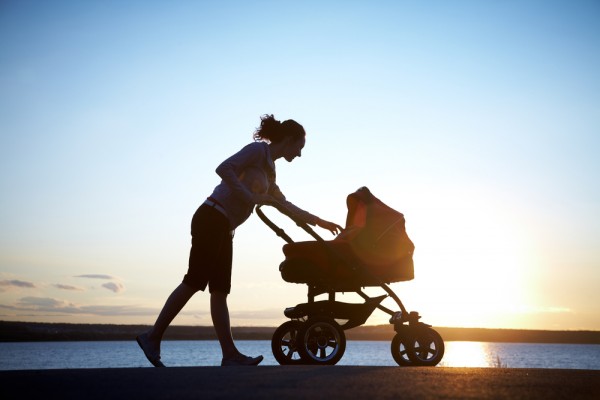
A walk with baby can be the perfect prescription for physical and mental health.
Low estrogen makes the long duration stuff less effective and the high cortisol can make the intense stuff back fire.
*Don’t focus on cutting calories or on eating less, your main job really is to nurture your baby – let’s not lose sight of that as we vie for more weight loss. Instead focus on more support foods: vegetables and lean proteins; as well as more activity. Move as much as you can.
Do 10-20 body weight squats several times per day i.e. while you’re waiting for your tea water to boil, as baby sits there cooing at you, anytime you have 1 minute do a set of squats with a pelvic floor lift.
Dance with your baby. Walk as much as possible instead of driving or park further away (10,000 steps a day is a great goal). Jaunt up and down your staircase quickly and frequently. Play at the park.
Live the Dr. Brooke mommy mantra of, “Do as much as you can, as often as you can.”
Life for a woman with a new baby is anything but predictable – babies seem to have little regard for our workout schedule. While going to the gym offers you the most equipment, I’ve found getting it done at home has increased my consistency 10 fold.
My home gym takes up less than 2 square feet and was a minimal investment. I’ve got 2 kettlebells, one set of Valslides, a TRX, and I make use of the stairwell in my apartment building for some sprints.
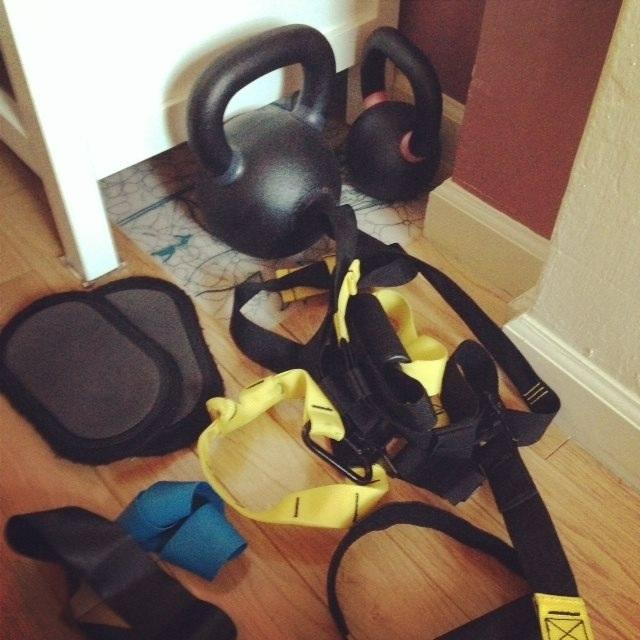
My home workouts are rarely seamless start to finish, but I’ve learned to finish anyway. Yesterday I had to stop 3 times and put the kettlebell down and pick up the baby. I wanted to stop, feel frustrated, and try again tomorrow.
Instead I just kept going. Sure I had more rest than my circuit called for, but I got it done. That’s the key right now.
The lower carb aspect will keep your insulin more managed, while the higher fat intake will keep your calories up and keep you satiated. Overall you’ll likely feel more satisfied and won’t risk dropping calories so low your milk supply drops.
Remember, low carb is all relative. Find your unique carb tolerance here.
…after you stop nursing.
I was pleasantly surprised that my fat loss got so much easier literally the week I stopped breastfeeding. This is a time to own your breastfeeding choice. Sure it may be easier if you weren’t breastfeeding, or hadn’t just had a baby, but these were our choices – for better or worse.
Prolactin, the hormone responsible for making milk also promotes fat storage through a variety of mechanisms including worsening insulin resistance (in its own right) and lowering the hormone adiponectin. Adiponectin is a hormone secreted by fat cells that helps regulate insulin sensitivity (less adiponecin means you’ll tolerate carbs less well). While your hormonal profile may make fat loss slow during breastfeeding, keep reminding yourself of the incredible benefits to you and baby that nursing provides.
Read more on that here:
So many women feel wracked with guilt that they are complaining about feeling chubby while they are also experiencing the joy of a beautiful baby. I’ve fallen prey to this as well, I mean how shallow am I to worry about my waistline when so many women can’t even ovulate well? Here I am with my adorable baby girls, and I’m whining about being fat?
Both can be true: you can want to feel good about your body again and be insanely grateful for your baby. They aren’t mutually exclusive. Keep perspective and use the gratitude you feel for having your little bundle fuel you to make better choices for yourself when it comes to food and exercise.
If you’re exercising, eating better, and finding a few moments for self-care you will be much better able to care for yourself and your family.
They need you, so you need to be in a good place.

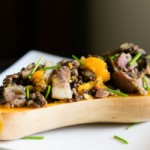 This post was originally published on this site
This post was originally published on this sitehttp://chriskresser.com/
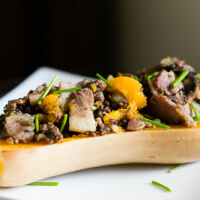
This post is sponsored by the Paleo Recipe Generator, which features over 700 Paleo recipes personalized to meet your unique needs.
Type of dish: Breakfast, Lunch, Dinner, Leftovers
Servings: 2-4
Oven Temp: 350°F (180°C/Gas 4)
Equipment: Roasting Pan, Sauté Pan
Enjoy!
For more recipes like this, and meal plans that can be customized just for you, check out the Paleo Recipe Generator.
 This post was originally published on this site
This post was originally published on this sitehttp://www.marksdailyapple.com/
 For today’s edition of Dear Mark, I’m answering five questions, all coming from a single reader email. First, Rosa asks about buying high-quality produce and grass-fed meat for her family on a budget. Can it be done? If not, what should she do? Second, she wonders whether she’ll get enough calcium eating this way. It’s a valid concern, seeing as how basic Primal eating often eliminates dairy. I try to assuage her. Third, if the Primal Blueprint is such a healthy, nutrient-replete lifestyle, why do I sell supplements? How does one reconcile the two seemingly contradictory concepts? Fourth, should Rosa be worrying about eating a high-fat diet if she’s taking meds for high cholesterol? And fifth, what are some effective replacements for chinups and pullups that can be done at home sans equipment?
For today’s edition of Dear Mark, I’m answering five questions, all coming from a single reader email. First, Rosa asks about buying high-quality produce and grass-fed meat for her family on a budget. Can it be done? If not, what should she do? Second, she wonders whether she’ll get enough calcium eating this way. It’s a valid concern, seeing as how basic Primal eating often eliminates dairy. I try to assuage her. Third, if the Primal Blueprint is such a healthy, nutrient-replete lifestyle, why do I sell supplements? How does one reconcile the two seemingly contradictory concepts? Fourth, should Rosa be worrying about eating a high-fat diet if she’s taking meds for high cholesterol? And fifth, what are some effective replacements for chinups and pullups that can be done at home sans equipment?
Let’s go:
Hi,
I’ve been reading The Primal Blueprint and am very interested but I have a few questions :
– I have a family and am on a budget which makes it hard for me to purchase organic foods and grass-fed meats. What do you recommend I do to get the same benefits? I can buy lean meat at regular grocery stores but it’s not organic nor grass-fed.
– What about calcium? Will I be getting enough calcium?
– I notice you sell supplements. If we follow the program, I thought we are getting all the vitamins and minerals we need. Who would be needing these supplements and how do we know if we need them?
– I have high cholesterol and am taking medication. I’m so afraid to eat more fats as suggested in the Blueprint. And if I end up eating some carbs or cheating one day, won’t this fat end up being bad for me? How do I overcome this fear?
– In the fitness program, I don’t have anything around the home to do chin ups, what do I do?
Thank you in advance for replying. I appreciate it!
Thank you,
Rosa
Thanks for the questions, Rosa. Let me address each in turn.
Calcium can be a blind spot when eating Primal. Many people give up dairy when they assume a Primal way of life, thus eliminating the most reliable source of calcium in the average Western diet. But dairy’s not the only place to get calcium.
Also, you don’t have to stop eating dairy. In fact, full-fat dairy appears to have many health benefits, assuming you can tolerate it. Now, if dairy gives you acne, destroys your toilet bowl (or makes it a barren wasteland), and clogs your sinuses, don’t eat it. If you’re intolerant of the proteins, if even a single half gram of lactose gives bad gas, don’t eat it. But don’t ditch dairy because you heard it was unhealthy somewhere. It’s a great source of calcium and other nutrients, and even if you weren’t born with lactase persistence, you can train your gut biome to digest lactose.
By all accounts, full-fat dairy is a helpful addition to the average Primal way of eating. Yogurt, kefir, good cheese — these are healthy foods. There’s no reason to avoid it if you don’t have to.
Not everyone needs supplements. But they sure can help many if not most people, and for some they’re crucial.
My supplements are designed to address the deficits common to modern diets and lifestyles. Vitamin D for the lack of sun exposure. Fish oil for inadequate long chain omega-3 intake. Primal Calm for a natural way to combat the damaging effects of chronic stress. Primal Flora for a healthy dose of beneficial bacteria that’s sorely lacking from the modern, clean, sanitized existence. And even my Damage Control Master Formula is meant to counter the oxidative stress and inflammation endemic to modern living. I take that one sporadically, as needed, to deal with particularly stressful times. Being a massive broad-spectrum antioxidant/phytonutrient blend, it’s actually more of a hormetic stressor designed to up-regulate our endogenous defense systems than a daily supplement. As far as vitamin and mineral supplements, fruits and vegetables grown today are generally less nutritious than produce grown in previous decades; supplementation can make up for the missing nutrients.
Also, people are imperfect. Though we often intend to make the right dietary choices and maintain pristine Primal lifestyles, we all slip up. We forget about the leafy greens in the fridge, and they get slimy. We skimp on the veggies. We don’t always eat as many brightly-colored phytonutrient-rich fruits and vegetables as we know we should. We go entire weeks without seeing the sun at midday, or eating fish, or consuming fermented food. And when those things happen, as they inevitably will in most people’s busy lives, having high-quality supplements on hand can really help.
Heck, I make these things to address problems in my own life. I don’t take anything every day, or even most days, but I’m glad to have something whose quality I can trust (because, well, I made it) for those days I do need the extra help. You might not, which is totally fine, but I know that many of you reading have had great experiences with them, as told in many of the success stories and elsewhere.
The vast majority of clinical trials comparing high-fat, low-carb diets to low-fat, high-carb diets find that the former improve cholesterol. Let’s look at two recent ones.
A 2013 study placed obese subjects on one of two diets for 12 weeks: a high-fat, low carb diet (33.5/56/9.6 P/F/C) or a low-fat, high-carb diet (22/25/55.7). Blood lipids, body composition, body weight, and inflammatory markers were all tracked. Subjects eating high-fat experienced greater improvements to blood lipids (lower triglycerides and increased HDL) and inflammatory markers (lower CRP and higher adiponectin). Body weight and body comp changes were similar across both groups, indicating that the higher-fat, lower-carb, higher-protein content of the high-fat diet was uniquely beneficial to inflammation and lipids.
And just the other day, a study was published showing that high-fat meals (whether the fat comes from cheese or meat) are less atherogenic than high-carb meals in overweight, postmenopausal women. They produce higher HDL and Apo-A1, both markers of improved resistance to atherogenesis. Both high-fat meals were high in saturated fat.
Couple those examples with the various observational studies showing a lack of association between fat intake (especially saturated fat) and cardiovascular disease:
Ultimately, you’ll just have to see what happens. Keep your doc in the loop, continue taking your meds and check your blood lipids after a month or two on the new diet. Just keep in mind what the latest science is saying on the subject.
As for cheat days, many people discover they actually improve the effects of going Primal. The once-weekly foray into gluttony can boost leptin (which increases energy expenditure and makes fat-burning easier), satisfy cravings, and refill empty glycogen stores — all good things for your overall metabolic health.
Ah, yes, chinups and pullups are tough to do around the house.
First, look again for anything overhead that can support your weight. A ledge? A random pipe? A tree branch?
The best replacement for a pullup or chinup is probably a row. If you’ve got a sturdy table, you can do inverted bodyweight rows underneath it by grabbing on to the edge. Keeping your feet on the ground during the row will make it easier. Placing your feet on a chair will make them harder. Most people, particularly untrained ones, can get a great upper body pulling workout using bodyweight rows on a standard kitchen table. Here’s a nice video and article from Nerd Fitness showing the inverted table bodyweight row.
That’s it for today, folks. Thanks for reading and, as always, help out down below with any addition input you have to offer.
Originally Posted At: https://breakingmuscle.com/feed/rss
This week, Breaking Muscle celebrates publishing our very first ebook for sale, The Max Effort Black Box System by Michael “Coach Rut” Rutherford. You can’t get it anywhere else but Breaking Muscle. If you’re a fan of being strong and having great conditioning at the same time, check it out.
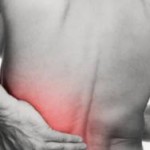 This post was originally published on this site
This post was originally published on this siteOriginally Posted At: https://breakingmuscle.com/feed/rss
Many people suffer from low back pain. Josh Henkin of Ultimate Sandbag Fitness shares a sandbag drill that strengthens your back and improves hip rotation and stability, often impaired by excessive sitting. Use a sandbag to perform the following exercise, called the crossover step deadlift:
 This post was originally published on this site
This post was originally published on this sitehttp://www.thekitchn.com/feedburnermain
If you’re anything like me, you’re well on your way to getting your fill of sweet summer corn on the cob. But there are a few things to know to make absolutely sure you’re maximizing these ears of gold.
From knowing how to pick the freshest ears without peeling back the husk to a quick cooking method to an ingenious idea for cooking huge batches, these are five helpful tips to keep in your back pocket this summer.